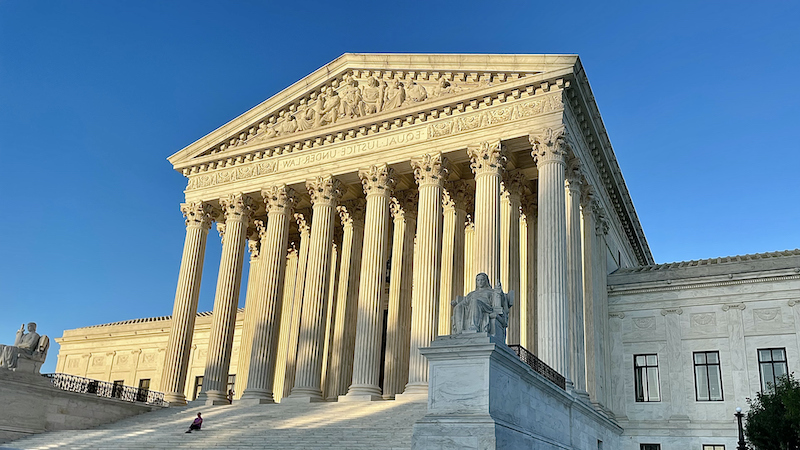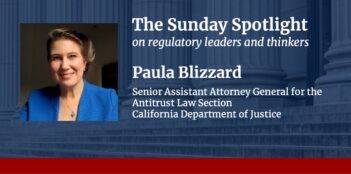
Supreme Court changes in administrative law create uncertainty for new antitrust guidance from federal regulators.
The Federal Trade Commission and the Antitrust Division of the U.S. Department of Justice will soon publish new joint guidelines applicable to mergers that raise horizontal issues in the same market and to mergers that raise vertical issues in the same supply chain.
These guidelines will reflect major changes in the perspectives of the two agencies with respect to the likelihood that a proposed merger or acquisition will lessen competition. They will also foreshadow decisions of the two agencies to challenge the legality of many proposed mergers and acquisitions that they would not have challenged in the past.
When the agencies apply the new guidelines in an effort to block proposed mergers and acquisitions, courts will have an opportunity to review the guidelines as they are applied in the context of particular cases. Courts have engaged in this review process for decades and have generally deferred to agencies. Courts have rarely questioned the validity of agency guidelines, and they usually defer to the agencies’ application of the guidelines to the facts of each case
When the federal antitrust agencies issue the next set of merger guidelines, they will discover that administrative law has changed in ways that will render it more difficult for the agencies to defend their guidelines in court. These changes will also create a much higher risk that the courts will make it difficult for the agencies to apply their guidelines.
The joint guidelines are guidance documents—some combination of general policy statements and interpretive rules. Unlike legislative rules, they are not legally binding. As a result, they are exempt from the lengthy and resource-intensive notice-and-comment process that agencies must use to issue substantive rules. During the period since the agencies issued their prior joint guidelines, the courts have made major changes in the way they treat guidance documents.
In 2012 and 2016, the Supreme Court issued two unanimous opinions that sent a clear message to circuit courts that they should be more willing to review agency decisions that are made relatively early in a decision-making process. Circuit courts have responded by holding that any guidance document that has significant practical effects is subject to pre-enforcement review. In 2020, the Federal Circuit became the latest circuit court to make that major change in the judicial approach to review of guidance documents.
At about the same time, the Supreme Court issued an opinion in which it announced a much more demanding approach to pre-enforcement review of guidance documents. The Court held that an agency cannot make a major change in policy without providing a detailed explanation that a court finds adequate. If the prior policy created any reliance interests, the agency must explain why its change in policy justifies the adverse effects that the policy change will have on reliance interests.
Because of these major developments in administrative law, there can be no doubt that courts will engage in pre-enforcement review of the new joint merger guidelines. Courts will not uphold the joint guidelines unless they find adequate the agencies’ explanation of the policy changes reflected in the guidelines.
When they engage in pre-enforcement review of the joint guidelines, courts are likely to be far less deferential to the antitrust agencies than they have in the past because of other major changes in administrative law.
In a 2019 opinion, the Supreme Court made clear that reviewing courts should accord agencies much less deference than they have in the past. In a 2022 opinion, the Court announced a much stronger version of the “major questions” doctrine. If an agency relies on an old statute to take an unprecedented action that has substantial economic or political effects, a court will not defer to the agency nor uphold the action unless the agency can provide “clear” evidence that Congress authorized it to take the action. If the new joint antitrust guidelines make major changes in law and policy that opponents can characterize as unprecedented, the guidelines may qualify for judicial review through the major questions doctrine.
Another significant change in administrative law could have an extreme adverse effect on the agencies’ ability to announce and apply the new guidelines. Since 2016, district courts and circuit courts have become far more willing to issue preliminary injunctions with nationwide scope that prevent federal agencies from applying major changes in policy. The Supreme Court has declined to stop many of those temporary injunctions, often without explaining why. These temporary injunctions can remain in effect for years and do not expire until the Supreme Court decides the merits of the action that it has allowed to be temporarily enjoined. If the new joint guidelines make major changes in law and policy that the courts find questionable, they will be exposed to a significant risk that a court will prohibit the agencies from applying the guidelines for years.
It will be interesting to see how courts apply the newly changed doctrines of administrative law to newly changed joint merger guidelines.




